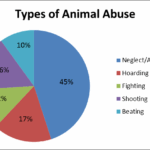The concept of cow tipping has permeated popular culture, often romanticized as a mischievous pastime enjoyed during late-night escapades in rural areas. However, upon closer examination, this seemingly innocuous activity raises significant ethical concerns. Is cow tipping merely an innocent prank, or does it constitute a severe form of animal cruelty? To discern the truth, we must delve into the origins, implications, and consequences of this alleged pastime.
Firstly, what exactly is cow tipping? The act is purported to involve sneaking up on a standing cow and pushing it over, hoping to witness the creature tumble helplessly to the ground. Proponents of this outrageous activity often claim it is a harmless rite of passage, a rite that encapsulates rural life, evoking laughter and amusement among those who participate. Yet, this whimsical narrative oversimplifies a complex subject that warrants serious scrutiny.
To begin with, it is vital to recognize that it is unlikely for a cow to be tipped over in the manner that popular belief suggests. Cows, known for their sizable heft and formidable strength, possess a natural stability that renders them difficult to topple. Interestingly, the anatomy of cows includes a substantial center of gravity, which allows them to maintain their posture with relative ease. Thus, the act of cow tipping is not as straightforward as some might believe. This brings into question the authenticity of the experiences shared by those claiming to have participated in such acts. Perhaps the tales of cow tipping are exaggerated, intended to convey a sense of reckless adventure, rather than a reflection of reality.
Nevertheless, the mere thought of attempting to tip a cow—regardless of its feasibility—sheds light on a deeper issue: the treatment of animals in society. When individuals engage in acts that may inflict harm or suffering upon sentient beings, they reveal an underlying culture that prioritizes amusement over empathy. It is crucial to acknowledge that cows, like all living creatures, are capable of feeling pain, fear, and stress. Such awareness is not merely academic; it forms the bedrock of animal rights which advocate for the humane treatment of all animals.
Furthermore, the implications of cow tipping extend beyond the immediate physical consequences for the animal. Engaging in such activities can have a ripple effect on both local animal welfare and broader societal attitudes towards livestock. As communities witness normalization of these actions, it may inadvertently cultivate a culture of desensitization towards animal suffering. This revelation can lead to a gradual erosion of respect for all forms of life, increasing the likelihood of more malicious behavior that could escalate beyond mere tipping.
When considering the psychology behind cow tipping, it is pertinent to understand the motivations driving individuals to partake in this activity. For some, the thrill of engaging in taboo behavior may provide an adrenaline rush, a brief escape from the mundanity of everyday life. In seeking enjoyment at the expense of an animal’s tranquility, humans reveal a troubling preference for momentary amusement over compassion. To challenge this narrative, it becomes necessary to explore alternative avenues for entertainment—ones that do not jeopardize the welfare of animals.
Alternative activities that engage with animals in a respectful and responsible manner abound. Consider farms that offer educational tours, where people can interact with cows and gain insight into their lives and behavior. Such experiences can foster deeper connections between humans and animals, leading to a greater appreciation for and understanding of these sentient beings. These alternatives not only respect the inherent dignity of livestock but also encourage empathy and responsibility towards them.
The question remains whether cow tipping will continue to linger in the shadows of obscurity or if the increasing awareness of animal rights will cause a pivotal shift in societal norms. As global conversations around animal welfare gain traction, it is imperative to challenge outdated traditions and beliefs. Societies must cultivate empathy rather than ignorance. In doing so, they forge connections that transcend mere amusement and forge a path towards ethical interactions with all beings.
Importantly, dispelling the myth of cow tipping serves a larger purpose—it reflects a societal evolution towards embracing compassion over cruelty. Educational initiatives aimed at highlighting the sentience of farm animals—cows included—can cradle a more informed public. Engaging discussions surrounding animal welfare contribute to an enriched understanding of what constitutes humane treatment in modern society. By demystifying the narratives surrounding activities like cow tipping, we bolster the foundation for meaningful conversations about how we interact with, respect, and care for animals.
In conclusion, the portrayal of cow tipping as a harmless and fun pursuit is an illusion, one that must be confronted with factual discourse and ethical considerations. Behind the veil of humor lies a practice that can inflict real harm on sentient beings. As we contemplate our role in protecting the welfare of animals, we must consistently choose empathy, understanding, and respect over outdated ideas of amusement. To ensure a more compassionate future, the collective conscious must prioritize the dignified treatment of all creatures, standing against the trivialization of their existence.






